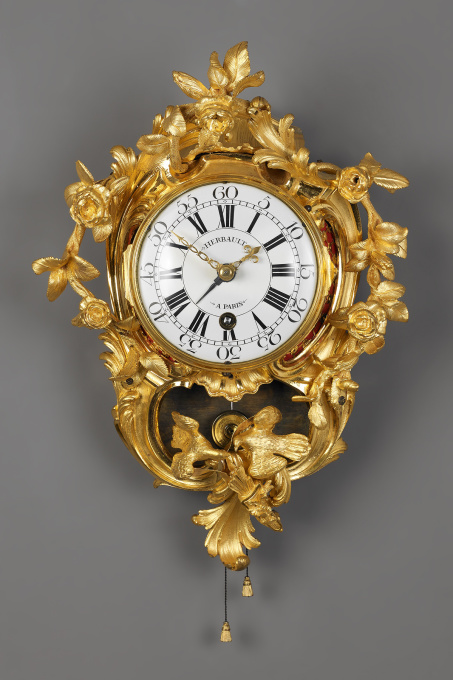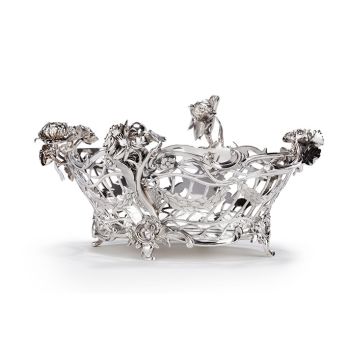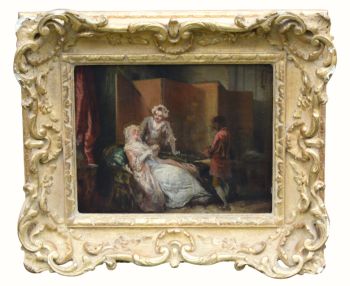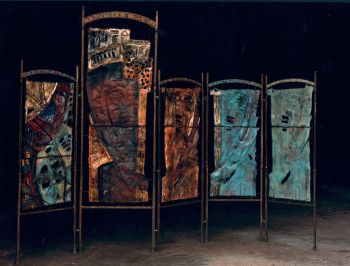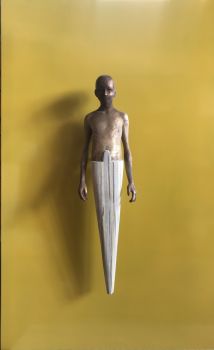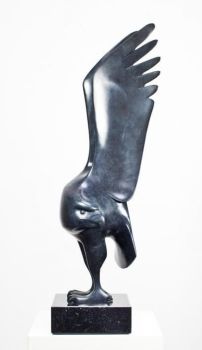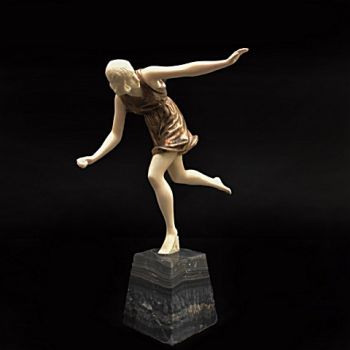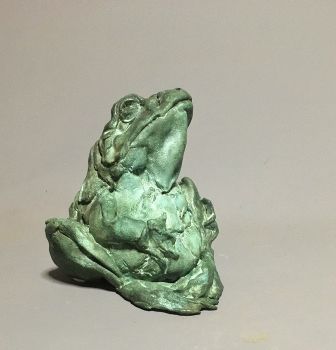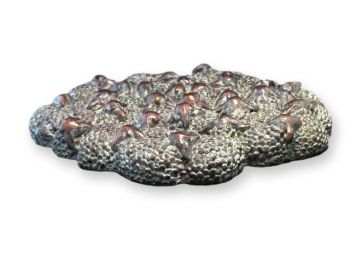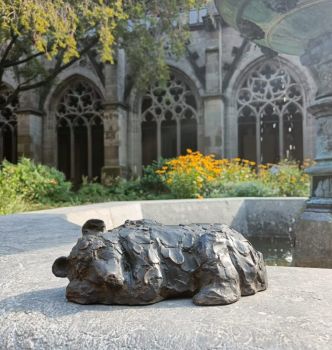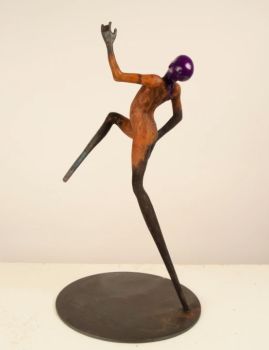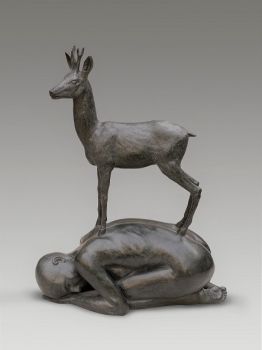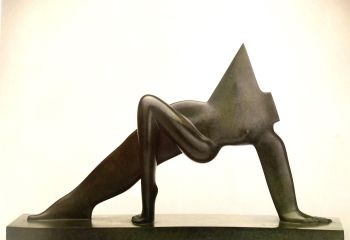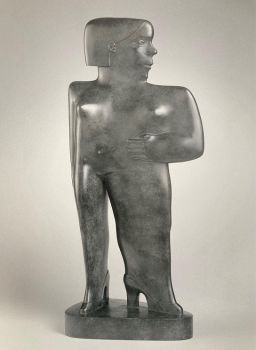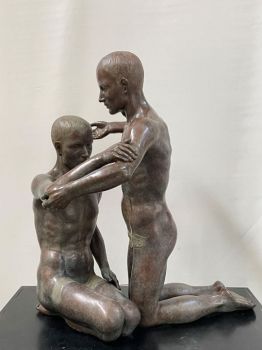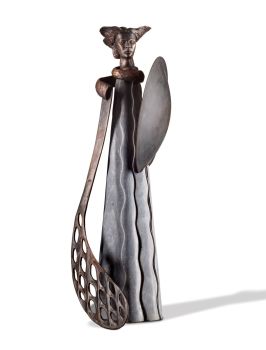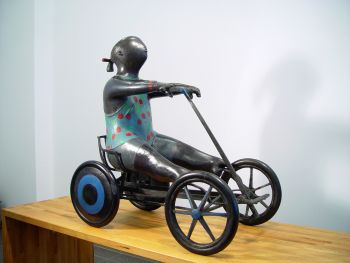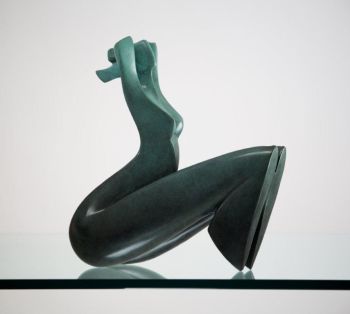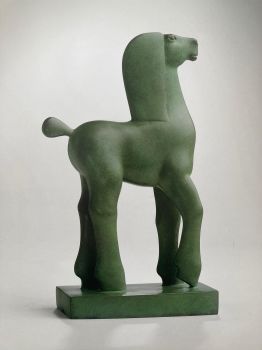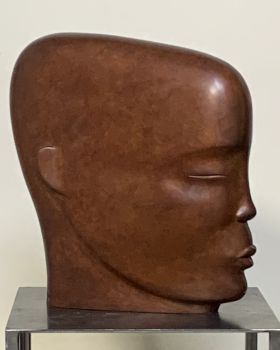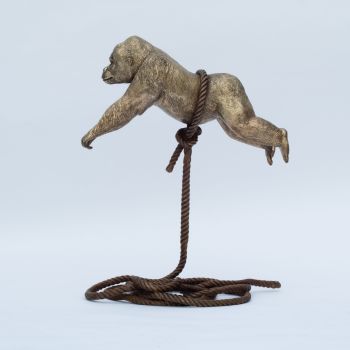A French Louis XV "Cartel d'Alcove" 1750
Louis-François Herbault
BronzeMétalÉmail
35 ⨯ 25 ⨯ 13 cm
Actuellement indisponible via Gallerease
- Sur l'oeuvre d'artA Cartel clock made by Louis-François Herbault, who became master clockmaker in 1743. He worked from the Quai Pelletier between 1744 and 1748 and later moved to the Rue de Grenelle Saint-Honoré between 1759 and 1789.
The clock is signed on the dial and on the clockwork: HERBAULT À PARIS
and bears the number: 264.
The clockwork has a three-week going train, a striking train on request, and an alarm. The striking train is operated with a cord. The white enamelled dial has Roman numerals to indicate the hours and Arabic numerals in the outer ring to indicate the minutes. The openwork hands are made of gilt bronze. The dial to set the alarm is made of blued steel.
The beautiful asymmetric gilt-bronze case is built up with flowery sprigs in the shape of a rose-bush. At the bottom two lovebirds have perched upon Amor’s quiver. The ensemble is a celebration of love. From the bottom up the branches are twining upwards around the dial to end in a crest of leaves and flowers. Behind the lovebirds there is an opening that shows the pendulum.
The case is an idiosyncratic example of the “style Rocaille”, which slightly differs from the sometimes exaggerating Rococo. The Rocaille is characterized by long undulating lines that look very natural. Often the lines consist of leaf and flower motives that culminate in an emphatic composition, like in this case the crest of leaves and flowers at the top. Although the details of objects made in the Rocaille style show a lot of asymmetry, the entities always have a balanced and natural appearance.
Provenance:
Private Collection Brussels - Sur l'artisteLouis-François Herbault est connu comme un horloger français. Herbault devint Maître en 1745. Il devint juré en 1761, et Garde en 1769. Son atelier était situé quai Pelletier, 1744-1748 et rue de Grenelle Saint-Honoré, 1759-1789. Outre les horloges, il a également produit des montres. Une pièce en or et en émail est exposée au Victoria and Albert Museum de Londres. Son oeuvre est signée HERBAULT A PARIS.
Artwork details
Catégorie
Style
Matériel & technique
Couleur
Related artworks
Artiste Inconnu
A Surinam-themed Amsterdam long-case clock1746 - 1756
Prix sur demandeZebregs & Röell - Fine Art - Antiques
 Sélectionné par
Sélectionné parGallerease Magazine
1 - 4 / 17Artiste Inconnu
A rare Japanese export lacquer medical instrument box1650 - 1700
Prix sur demandeZebregs & Röell - Fine Art - Antiques
Artiste Inconnu
The Stamford Raffles Secretaires.1800 - 1813
Prix sur demandeZebregs & Röell - Fine Art - Antiques
1 - 4 / 24- 1 - 4 / 24

